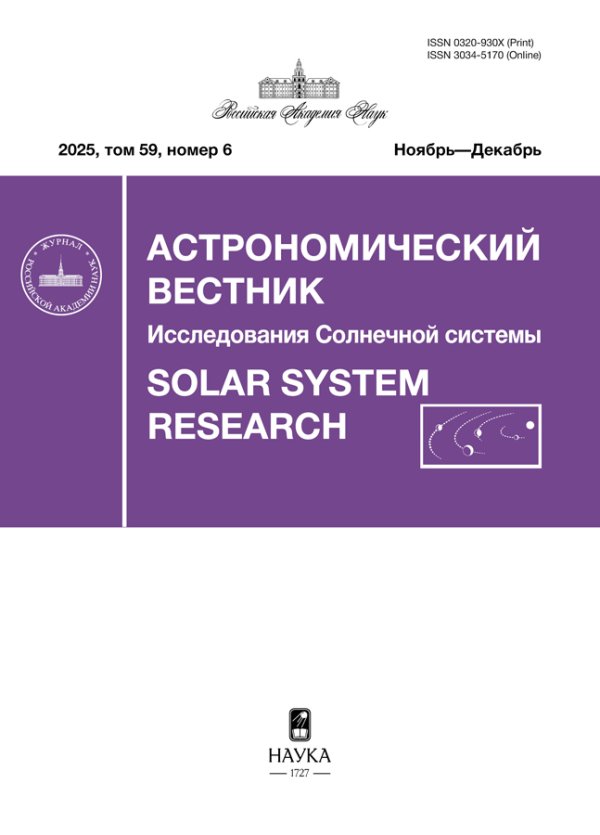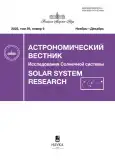Solar System Research
ISSN (Print): 0320-930X
Media registration certificate: № 0110359 от 02.03.1993
Founders
- Russian Academy of Sciences
- Keldysh Institute of Applied Mathematics
Editor-in-Chief
- Marov Mihail Y., academician RAS, Doctor of Sc., Full Professor
Frequency / Access
6 issues per year / Subscription
Included in
White list (3rd level), Higher Attestation Commission List, RISC
Current Issue
Vol 59, No 6 (2025)
Articles
PROSTRANSTVENNO-GENETIChESKIE SOOTNOShENIYa VULKANIChESKIKh KORON I KRUPNYKh VULKANOV VENERY
Abstract
 573–587
573–587


OTsENKA VOZDEYSTVIYa “METEORNYKh VZRYVOV” NA POVERKhNOST' VENERY
Abstract
 588-598
588-598


FOTOKhIMIChESKOE RAVNOVESIE I URAVNENIE BALANSA OZONA V SLOE NOChNOGO GIDROKSILA NA MARSE
Abstract
 599–610
599–610


NEGIDROSTATIChESKIE NAPRYaZhENIYa NEDR MARSA BEZ UChETA DLINNOVOLNOVOY KOMPONENTY
Abstract
 611–620
611–620


GEOLOGIChESKOE STROENIE VERKhNEY ChASTI DOLINY NIRGAL, MARS
Abstract
 621–630
621–630


OPREDELENIE FIZIChESKIKh MASS EKZOPLANET, NABLYuDAEMYKh METODOM IZMERENIYa LUChEVYKh SKOROSTEY: OBZOR METODOV I REShENIY, REZUL'TATY I NOVYE VOPROSY PO OPUBLIKOVANNYM DANNYM
Abstract
 631–645
631–645


MODELI YaRKOSTI ZVEZDNOGO NEBA I EFFEKTIVNOST' POISKA EKZOPLANET METODOM MIKROLINZIROVANIYa
Abstract
 646–658
646–658


SPEKTRY EKZOPLANET, POKhOZhIKh NA ZEMLYu, S RAZLIChNYMI PERIODAMI OSEVYKh VRAShchENIY
Abstract
 659–670
659–670


POSTROENIE NAChAL'NOY DOVERITEL'NOY OBLASTI VDALI OT INTERVALA NABLYuDAEMOSTI I OTsENIVANIE VEROYaTNOSTI STOLKNOVENIYa ASTEROIDOV S ZEMLEY
Abstract
 671–680
671–680


NIZKOENERGETIChESKIE TRANZITNYE TRAEKTORII V OKRESTNOSTI TOChEK LIBRATsII
Abstract
 681–697
681–697


REZONANSNYE VZAIMODEYSTVIYa VOLN PUANKARE V PRIBLIZhENII MELKOY VODY
Abstract
 698–709
698–709


TURBULENTNAYa MIKROPOLYaRNAYa ZhIDKOST' KAK SPLOShNAYa SREDA S VNUTRENNEY VIKhREVOY STRUKTUROY
Abstract
 710-722
710-722












